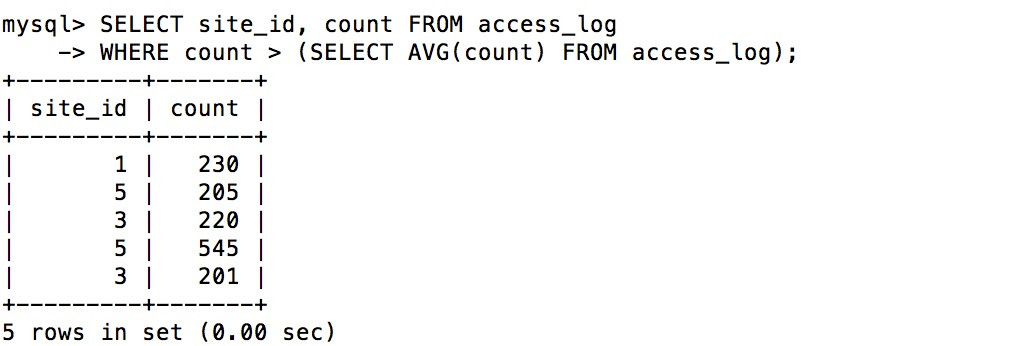SQL AVG()
AVG() function
AVG() function returns the average of a numeric column.
SQL AVG() syntax
SELECT AVG(column_name) FROM table_name
Demo database
In this tutorial we will use the php sample database.
The following is the data selected from the "access_log" table:
+-----+---------+------- +------------+
| aid | site_id | count | date |
+-----+---------+---- ---+------------+
| 1 | 1 | 45 | 2016-05-10 |
| 2 | 3 | 100 | 2016-05-13 |
| 3 | 1 | 230 | 2016-05-14 |
| 4 | 2 | 10 | 2016-05-14 |
| 5 | 5 | 205 | 2016-05-14 |
| 6 | 4 | 13 | 2016-05-15 |
| 7 | 3 | 220 | 2016-05-15 |
| 8 | 5 | 545 | 2016-05-16 |
| 9 | 3 | 201 | 2016-05-17 |
+-----+---------+-------+---------- -+
| aid | site_id | count | date |
+-----+---------+---- ---+------------+
| 1 | 1 | 45 | 2016-05-10 |
| 2 | 3 | 100 | 2016-05-13 |
| 3 | 1 | 230 | 2016-05-14 |
| 4 | 2 | 10 | 2016-05-14 |
| 5 | 5 | 205 | 2016-05-14 |
| 6 | 4 | 13 | 2016-05-15 |
| 7 | 3 | 220 | 2016-05-15 |
| 8 | 5 | 545 | 2016-05-16 |
| 9 | 3 | 201 | 2016-05-17 |
+-----+---------+-------+---------- -+
SQL AVG() Example
The following SQL statement gets the average value from the "count" column of the "access_log" table:
Example
SELECT AVG(count) AS CountAverage FROM access_log;
Execute the above SQL and the output result is as follows:

The following SQL statement selects "site_id" and "count" that have higher than average visits:
Example
SELECT site_id, count FROM access_log
WHERE count > (SELECT AVG(count) FROM access_log);
WHERE count > (SELECT AVG(count) FROM access_log);
The output result of executing the above SQL is as follows:









